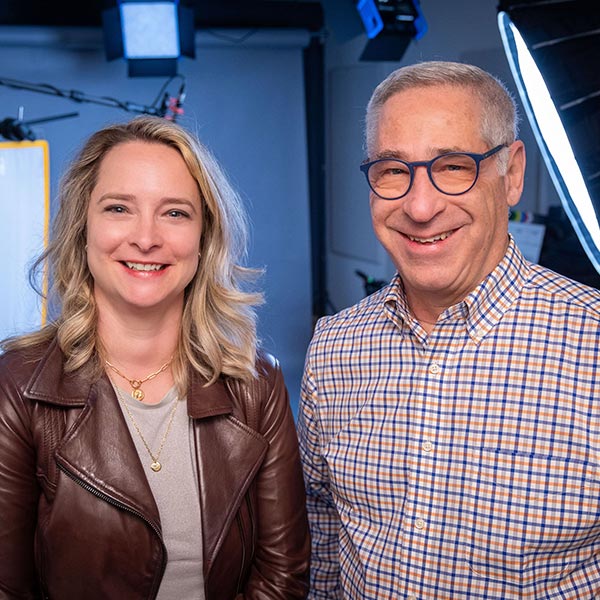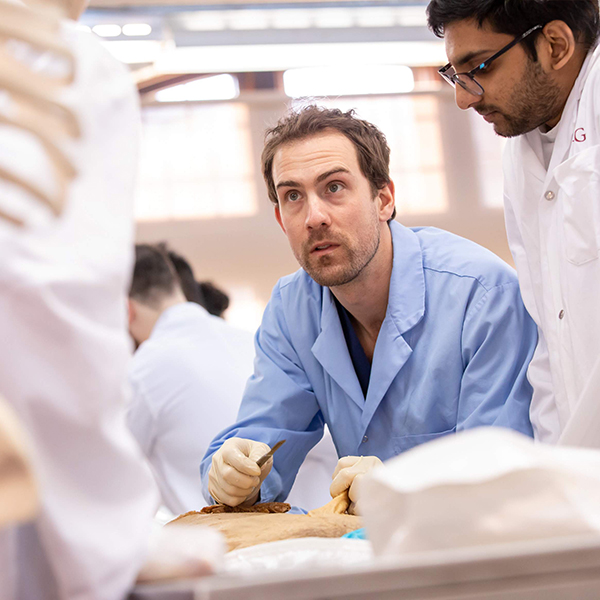Like so many other countries in the world, the United States has been struggling to contend with the COVID-19 pandemic. A recently created consortium involving more than 500 scientists from federal agencies, state and local public health labs, universities, private medical science firms and NGOs is hoping to give U.S. policymakers a clearer sense of how the pandemic is spreading throughout the country and how SARS-CoV-2, the virus that causes COVID-19, might evolve in the coming months.
The man leading this ambitious U.S. effort is a Canadian – or, to be more precise, he is a dual citizen of both Canada and the U.S.
Duncan MacCannell, BSc’98, is the chief science officer for the Office of Advanced Molecular Detection (AMD), part of the Centers for Disease Control and Prevention (CDC) in the U.S. In his work at the AMD, MacCannell is credited with playing a pivotal role in upgrading the capacity of both the CDC and state labs throughout the U.S. to use genomic sequencing and related cutting-edge medical technologies to support major public health initiatives.
Not that long ago, the U.S. wasn’t faring particularly well in that area. An expert advisory committee was assembled to assess the CDC’s progress in terms of taking advantage of genomic sequencing and other advanced technologies like bioinformatics, an interdisciplinary approach involving computer science, biology and mathematics that is playing an increasing important role in the analysis of large biological datasets.
The report card issued by the expert advisory committee wasn’t full of praise.
“There were some pretty choice comments that came out of that blue ribbon panel,” says MacCannell, “like the fact that the CDC ran the risk of being outdated or obsolete within the next several decades if we didn’t act. Or that our current bioinformatics capacity was roughly on par with a junior college.”
MacCannell was one of the CDC officials who worked hard to change that narrative. “I got to have a firsthand seat in the creation of a federal budget initiative and helped in creating what eventually became the AMD program. I don’t think [it would be] too much to say that it has really had a transformational impact across the U.S. public health system.”
MacCannell describes genomic sequencing as “a technology that is essentially universally applicable. You can sequence a pathogen. You can sequence a human. You can sequence virtually anything that has nucleic acid. What that means is that it is a universal hammer.
“The reason why that’s important to public health is that, historically, we have used very specialized tests for each different pathogen. This kind of universal tool is incredibly useful because it can be so broadly applied across public health with the right sorts of investments. You can apply a lot of the same approaches and the same infrastructure to different things, the study of malaria or the study of influenza, just a wide range.”
Earlier this year, his efforts with the AMD office earned him the Arthur S. Flemming Award, one of the top prizes in the U.S. for federal employees.
MacCannell is now leading the SARS-CoV-2 Sequencing for Public Health Emergency Response, Epidemiology and Surveillance (SPHERES) consortium that is using genomic sequencing to track the spread of COVID-19 in the U.S. The partners involved in the SPHERES effort include public health officials and scientists from 34 states, universities like Harvard, Stanford and UCLA, corporations like Quest Diagnostics, and non-profit organizations like the Bill and Melinda Gates Foundation.
Many of these partners were already involved in COVID-19 sequencing projects of their own, explains MacCannell. SPHERES hopes to coordinate the different efforts to ensure that they have maximum impact.
“In the early days of the pandemic, we reached out to a lot of our state labs and started talking about how we could ramp up the sequencing activity around this, and we recognized very quickly that many states were struggling with the initial demands for setting up primary testing and that they were grappling with staffing concerns.
“At the same time, there were a lot of academic centres and clinical centres and commercial entities that were all very interested in sequencing the virus and contributing [to efforts to better understand the disease]. In many cases, these were not traditional public health partners, but we recognized we could get more accomplished if we all worked together. It made sense for us to try to set up some sort of a coordinating body to take all these big boats and small boats and get them all rowing roughly in the same direction.”
The SARS-CoV-2 virus doesn’t have a particularly complex genetic code and researchers have noticed that the virus experiences a change in its RNA every two weeks or so. MacCannell says these changes, known as mutations, can be traced, and that the data this uncovers offers up important information about how the virus is spreading. Researchers affiliated with SPHERES have already traced much of the initial spread of the SARS-CoV-2 virus in the U.S. back to China and Europe before the travel bans that were intended to thwart the spread were put in place.
“We want to use this fine-grained information about the viral genome to understand how it is spreading through our population so that we can position our public health response accordingly,” says MacCannell. “We also want to know if there are any changes [in the virus] that might impact how a vaccine might work.”
SPHERES is coordinating its efforts with similar initiatives in the United Kingdom, Canada and elsewhere. “This is a global public health challenge and it makes sense to make sure that we are organized,” says MacCannell. “And actually for CanCOGeN [the Canadian COVID Genomics Network which involves researchers from the McGill Genome Centre], I’m on the steering committee for that one.”
MacCannell was born in Calgary, spent much of his childhood in the U.S., and earned three degrees at Canadian universities.
“My time at McGill certainly set me on the course I’m on now,” says MacCannell. “I was in Montreal around the time that [hospitals there] were struggling with a major outbreak of C. difficile,” a bacterium that can cause dangerous complications for hospital patients.
MacCannell became interested in the ramifications of that outbreak and in infectious diseases in general. “It really made me pivot in terms of my research interests. When I did my PhD at the University of Calgary, I basically looked at C. difficile across Canada.” A couple of his McGill courses also stoked an early interest in the potential applications of bioinformatics.
MacCannell says his time at McGill has been helpful in other ways too. “I lived in the Plateau during my third and fourth years [at McGill]. I’ve certainly been able to use the French I picked up [in Montreal] working on global health since then.
“The global public health community is actually pretty small,” adds MacCannell. “I have close collaborators at the CDC that are also McGill grads. When you work in global health circles, McGill seems to be this oddly frequent common denominator among a lot of people. I often joke that there is a secret cabal of Canadians in global public health because we keep showing up in random places.”


